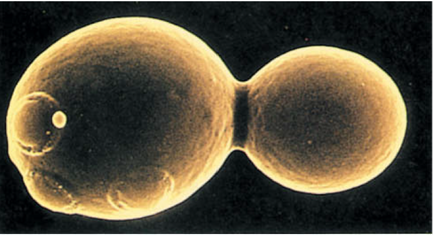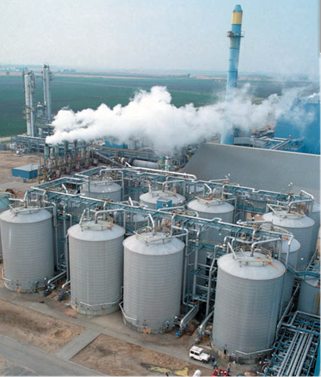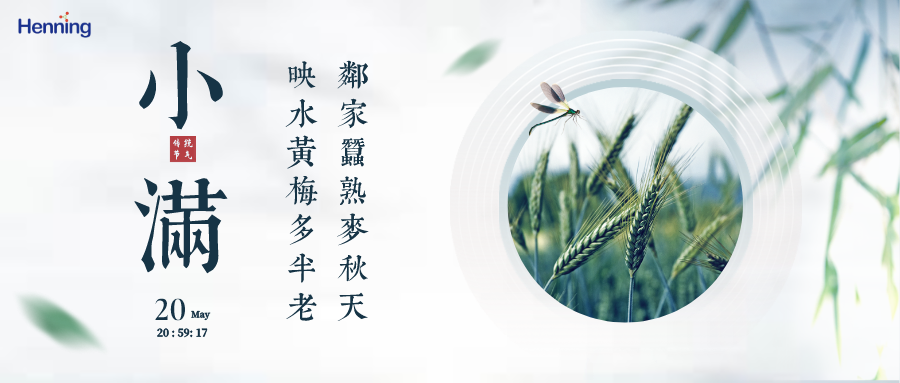<rt id="sniek"></rt>

In the sound of Zi Gui, it rained like smoke, and it was so red that it penetrated the guest blanket.
Yingshui Huangmei is mostly old, and the neighboring silkworms ripen wheat in autumn.
"Lesser Fullness of Grain" Yuan Yuanhuai
Lesser Fullness of Grain is the second solar term in summer."Man" has two meanings: one is that the rivers are getting full, because during this solar season, the precipitation in the south increases, and there are more torrential rains; the other is the fullness of wheat, which has less rainfall in the north, but the grains of summer crops such as wheat have gradually become full.
This solar term popular science will introduce to you.Application of yeast.
When it comes to yeast, many people will think of noodles at first impression, but can yeast only be used to make noodles?
In fact, there are many products made by yeast fermentation in daily life, such as bread, steamed bread, beer and liquor. Yeast is one of the most important bacteria in the history of human civilizationBe applied toThe earliest microbesIt is widely used in the fermentation process of food and wine.

Legend: yeast fermentation product Brock Biology of Microorganisms
What is yeast?
What is microzyme?
Yeast is a single-celled fungus, usually spherical, oval, oval, etc., the cell size is much larger than the single cell of bacteria. Yeast, distributed throughout nature, is a typical facultative anaerobic microorganism, which can ferment sugar (glucose) into alcohol and carbon dioxide, and is a natural starter.

Legend: yeast, Brock Biology of Microorganisms
Wide application of yeast
There are many kinds of Saccharomyces cerevisiae, the most common of which is Saccharomyces, including S. cerevisiae and so on. Most of the yeasts used for brewing wine are different varieties of Saccharomyces cerevisiae.
Different yeast cells contain different enzymes, which will release different aroma. Yeast is also one of the most important fermentation bacteria of the enzyme, which acts with acetic acid bacteria, lactic acid bacteria and other microorganisms to form a unique flavor and rich nutrition.
Yeast is a simple single-celled eukaryote, which is easy to culture and has a short growth cycle. Yeast contains circular DNA-- plasmid, which can be used as a carrier of genetic engineering, is widely used in modern biological research, and is an important model organism in eukaryote research.
Yeast cells are rich in protein and vitamins, which have high edible value and feeding value. Yeast can be used as animal probiotics and its active products, whether living strains of yeast or derivatives or fermentation products are widely used.
At present, there are 8 kinds of feed raw materials related to yeast single cell protein, yeast fermentation and processing, including beer yeast powder, Candida utilis protein, food yeast powder, beer yeast mud, yeast hydrolysate, Saccharomyces cerevisiae extract, yeast culture, yeast cell wall and so on.
Because yeast is rich in physiologically active substances such as proteins, vitamins and enzymes, it is medically made into yeast tablets such as mother raw tablets, which can be used to treat dyspepsia caused by unreasonable diet. In the process of yeast culture, some special elements are added to make yeast containing selenium, chromium, zinc and other trace elements, which can be used to supplement the nutritional elements needed by specific people, and has a certain curative effect on some diseases.
The metabolic pathway of yeast can be used to prepare some drugs and biochemical substances needed by human beings, such as insulin, lactic acid and alcohol. In recent years, yeast has been used in oil and oil dewaxing, glycerol fermentation, vitamins, organic acids and enzyme production. With the continuous development of life science and modern biotechnology, the application prospect of yeast will be broader.

Legend: an ethanol production plant, Brock Biology of Microorganisms
The harm of yeast
Although yeast is widely used, there are also some yeasts that can bring harm to human beings and spoil feed, food, textiles and other raw materials. Eating foods with excessive yeast may cause diarrhea.
A small number of yeasts belong to pathogenic bacteria, which can cause human and animal diseases, such as Candida albicans, which can invade skin, mucosa and viscera, showing acute, subacute or chronic inflammation.

"24 solar terms" for microbial targeted prevention and controlIt is a new popular science column on microbial prevention and control launched by Hanning Chemical in 2022. We will regularly launch popular science essays on microbial prevention and control on the Chinese traditional 24 solar terms."the four seasons are orderly, everything is sometimes", let's "send knowledge in the season"To explore the microbial world together:Hanning will make an appointment with you at the right time.
